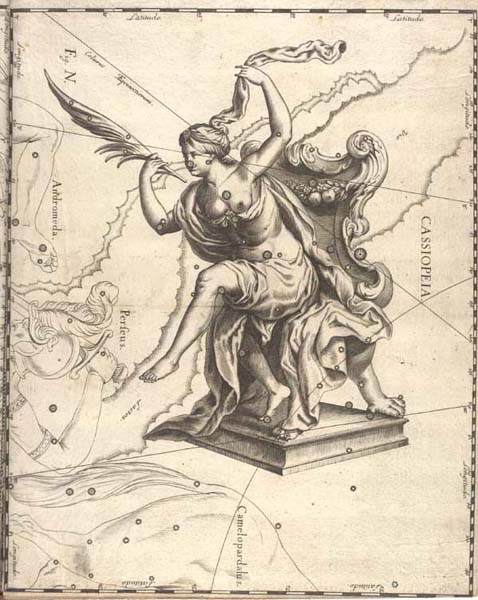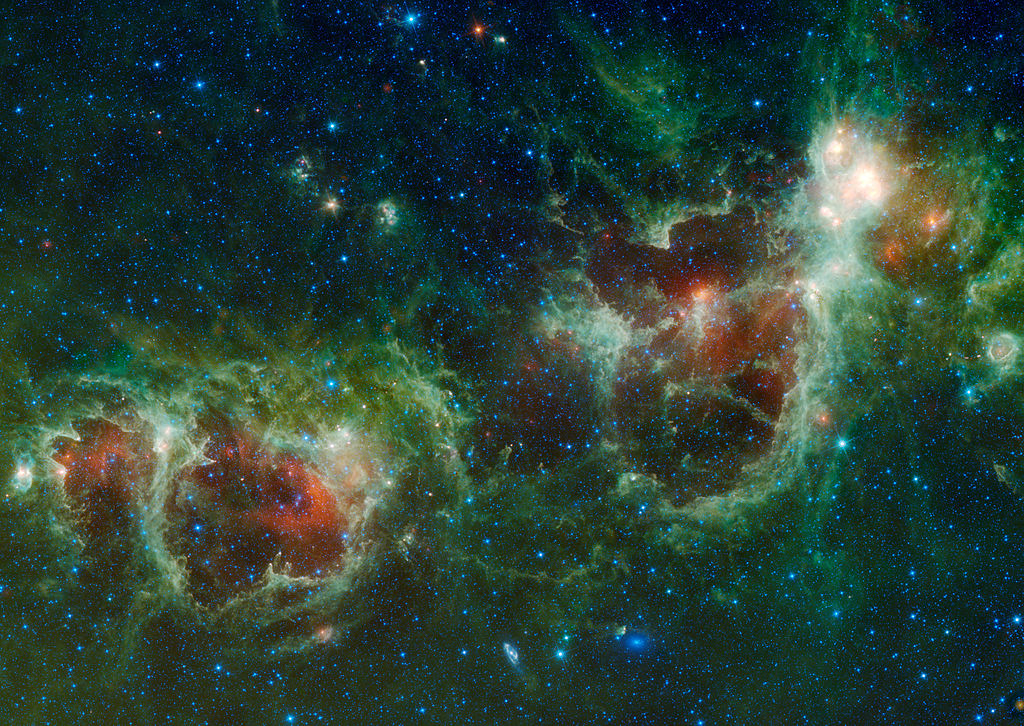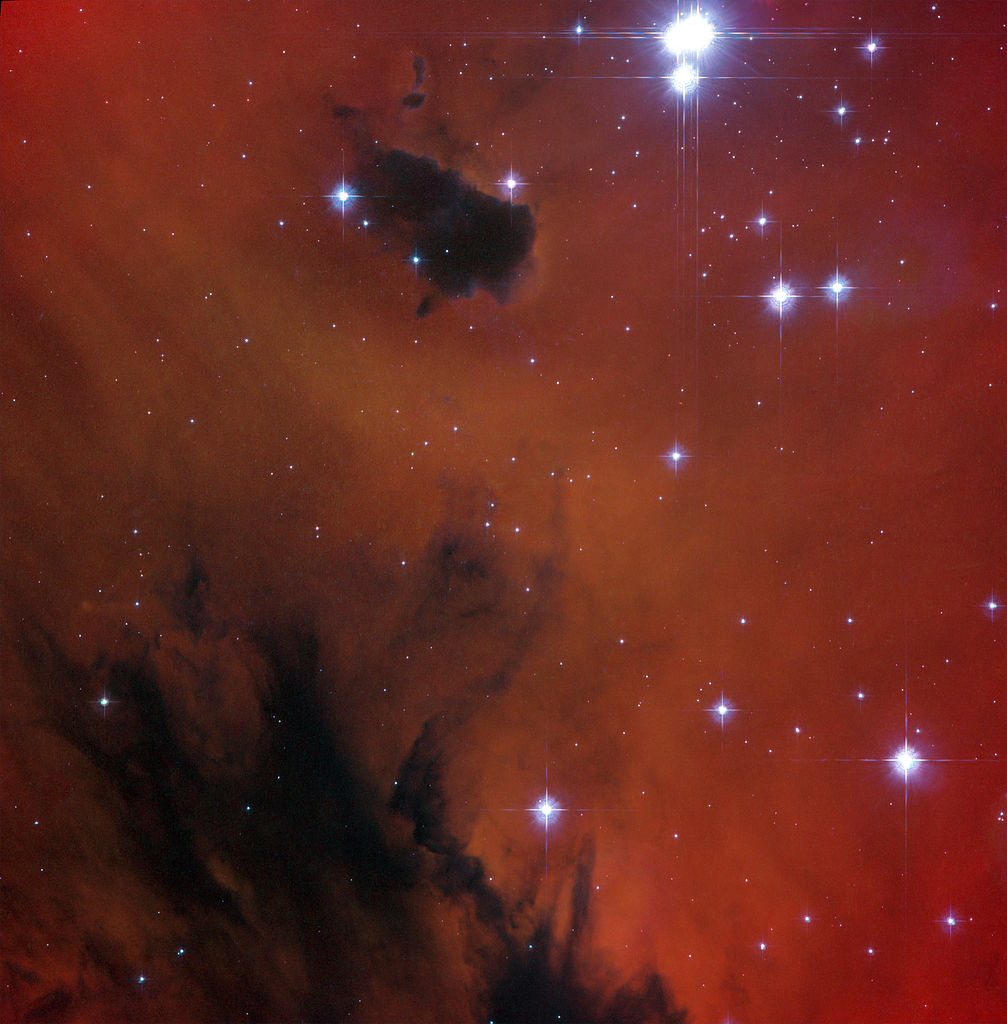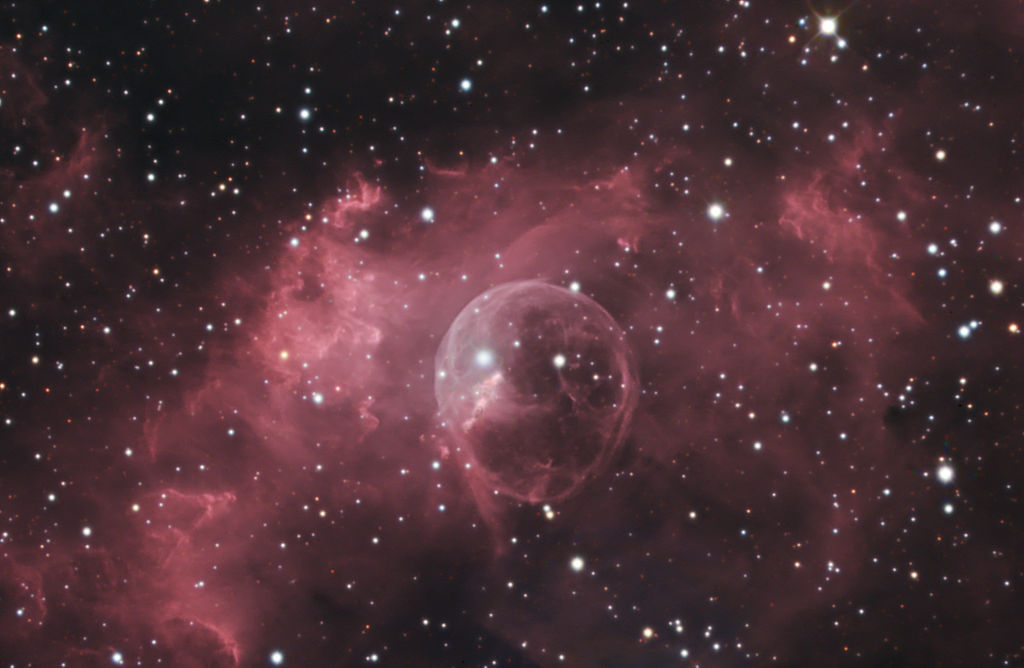
By IAU and Sky & Telescope magazine (Roger Sinnott & Rick Fienberg) [CC-BY-3.0], via Wikimedia Commons
"The Seated Queen"

By IAU and Sky & Telescope magazine (Roger Sinnott & Rick Fienberg) [CC-BY-3.0], via Wikimedia Commons
Abbreviation: Cas
Genitive: Cassiopeiae
Constellation family: Perseus
Nearest constellations: Andromeda, Camelopardalis, Cepheus,
Lacerta, and Perseus
Right ascension: 1.01h
Declination: 62.20°
Visible between latitudes: +90° and -20°
Square degrees: 598
Luminary: Shedar (Alpha Cassiopeiae)
Named stars: Shedar, Caph, Ruchbah, Segin
Notable deep sky objects: M10, M103, M52, NGC 7635 (Bubble Nebula), IC 10
Cassiopeia is a constellation in the Northern Hemisphere that is best seen in November.
Cassiopeia was the location of two notable supernovae. The earliest supernova was recorded by observers as first appearing in November of 1572; among the stargazers who spotted the exploding star was Danish astronomer Tycho Brahe, after whom the supernova is named. Brahe called the star Stella Nova, or "new star", since the star had not been visible before the supernova occurred. It shone during the day for two weeks after the initial explosion and could be seen with the naked eye for 16 months. It is possible that the supernova inspired part of the dialogue of the first scene in Hamlet by Shakespeare, as there is evidence that the playwright knew of Brahe's work.

By Johannes Hevelius, scanned by Torsten Bronger 2003 April 4 [Public domain], via Wikimedia Commons
The second supernova probably occurred around 1680, and the star that exploded is called Cassiopeia A. It is the strongest source of radio signals other than the Solar System and was first detected by radio astronomers in 1947.
In Greek mythology, Cassiopeia represents a woman of the same name who was the wife of Cepheus, King of Ethiopia, and the mother of Andromeda. Cassiopeia was vain and boasted of her own beauty, claiming she was more beautiful than the sea nymphs called the Nereids. Poseidon, god of the sea, was angered by her statements and attacked the coast of Ethiopia.
An oracle told King Cepheus the only way to stop the destruction of his country along the ocean was to present Andromeda as a sacrifice to the sea monster Cetus, which Cepheus and Cassiopeia proceeded to do. Andromeda was saved by Perseus who flew past on the back of Pegasus and saw her chained to the rocks by the sea. He successfully killed Cetus and he and Andromeda were later married.
IC 1805 and IC 1848 (the Heart and Soul Nebulae):

By NASA/JPL-Caltech/UCLA (WISE) [Public domain], via Wikimedia Commons
Supernova remnants of Tycho, seen in x-rays:

By NASA/CXC/Rutgers/K.Eriksen et al. [Public domain], via Wikimedia Commons
IC 1590 (part of emission nebula NGC 281):

By ESA/Hubble & NASA [CC-BY-3.0], via Wikimedia Commons
NGC 7635 (Bubble Nebula):

By Ken Crawford [CC-BY-SA-3.0], via Wikimedia Commons
IC 1848 (Soul Nebula):

By NASA/JPL-Caltech/Harvard-Smithsonian [Public domain], via Wikimedia Commons